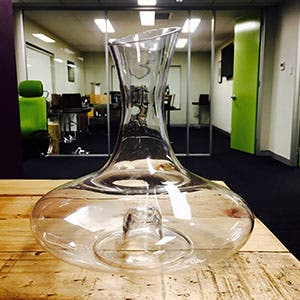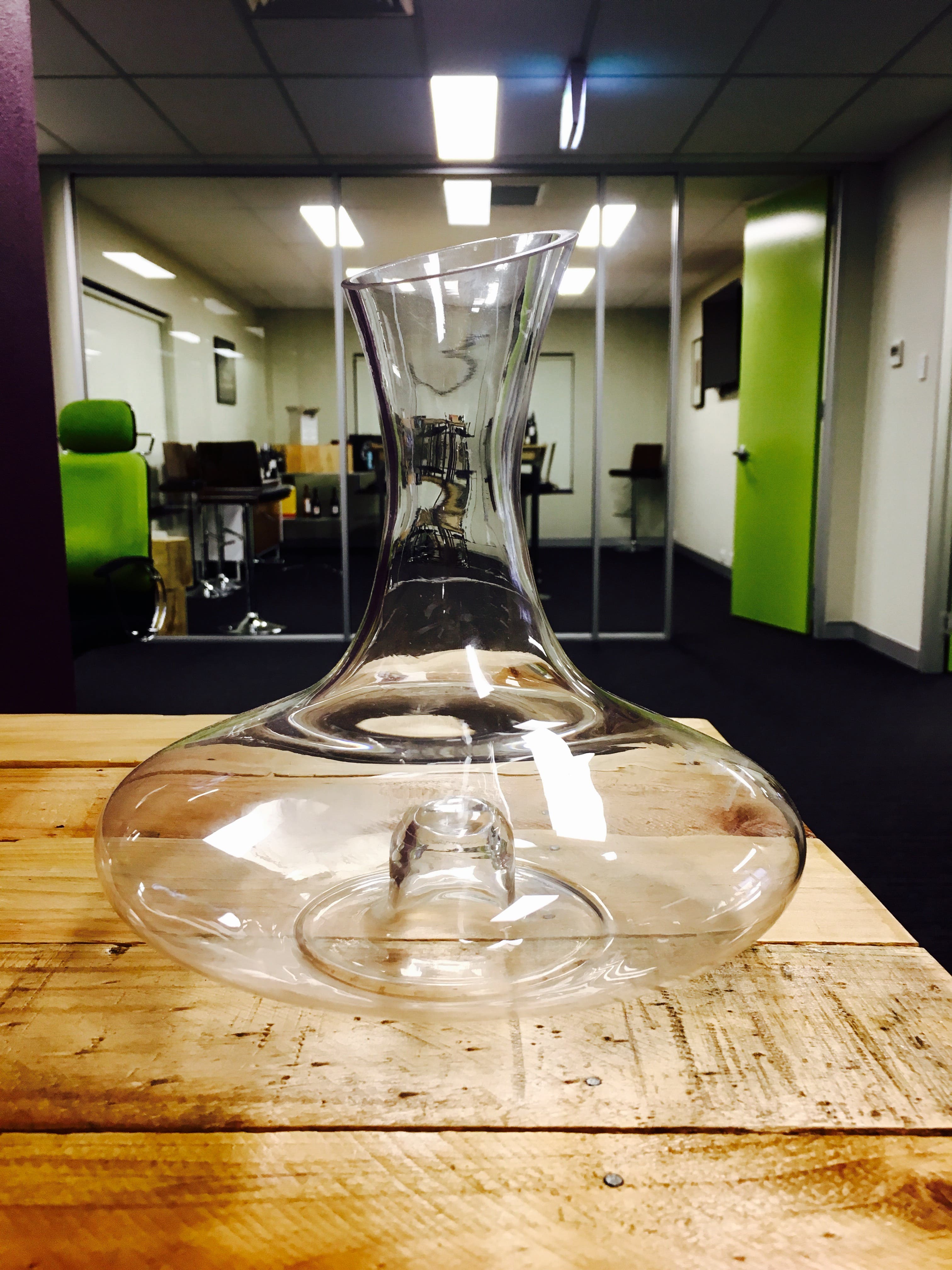
To aerate or decant – that is the question! I have been asked by a number of people recently, so here’s my take on it.
Why do either in the first place? Well I would say quite simply to get the best from the wine. The mission when opening a wine is to determine if it needs to be aerated or decanted, or not at all. Don’t confuse the process as it spoil the wine.
Like most things that have been couped up in a confined space for a significant amount of time it wants to get out, stretch it's legs and get some air. Sometimes the wine doesn’t need either, but often it does and this is where a breather is helped along with a decant or an aeration. Exposing it to oxygen can improve its taste and help to maximise the full potential of the wine.
There are a number of ways to aerate a wine. The simple 'swirling the wine around in a glass' may achieve all that is needed to bring out the best in the wine – releasing its aroma and complexities, and at the same time softening tannins and this process is a great way to determine if the use of an aerator will speed the opening up of the wine. A wine aerator may be used and is a fairly aggressive means of opening up a wine by adding oxygen. Aerators like Vinturi force the wine through its bubbler and into the glass often softening the tannins of young or bold wines. Use of an aerator is appropriate where time is limited.
 Decant, or aerate?
When to Decant rather than Aerate?
An aged wine, typically 10 years or older often has a gritty sediment at the bottom of the bottle. Rather than pour that unpleasant looking grit straight into a glass, it is best leaving it in the bottle. It is also wise to decant the wine after the bottle has been standing upright for a day or more (so that the sediment settles at the bottom of the bottle). Pouring the wine slowly into the decanter deals with both the removal of the sediment sitting at the bottom of the bottle and helps exposes the wine to air. In days of old this may have been done in the light of a candle or lamp to keep an eye on the sediment. The process of decanting oxygenates the wine, thereby accelerating the wine’s development on the palate. Exposing some older wines to too much air (poured into a decanter too early, and left to stand for hours) can cause those delicate aromas to dissipate which directly effects the flavour. Double decanting (pour the wine from the decanter back into the original bottle) may avoid this potential spoil and save time. Often a younger wine will continue to soften after decanted and resealed (cork back in or stelvin cap back on) courtesy the oxygen trapped in the bottle/wine.
If you don’t have a decanter or an aerator, then swirl the wine around in the glass. The introduction of oxygen to the wine this way will assist in the reduction of stinky aroma compounds and reduce the concentration of certain acids and tannis, making the wine taste smoother. You may feel like a ‘wine snob’ but it works every time.
So, the secret is to experiment. Let the wine tell you what it wants done to it! A little science experiment for grown-ups!
Decant, or aerate?
When to Decant rather than Aerate?
An aged wine, typically 10 years or older often has a gritty sediment at the bottom of the bottle. Rather than pour that unpleasant looking grit straight into a glass, it is best leaving it in the bottle. It is also wise to decant the wine after the bottle has been standing upright for a day or more (so that the sediment settles at the bottom of the bottle). Pouring the wine slowly into the decanter deals with both the removal of the sediment sitting at the bottom of the bottle and helps exposes the wine to air. In days of old this may have been done in the light of a candle or lamp to keep an eye on the sediment. The process of decanting oxygenates the wine, thereby accelerating the wine’s development on the palate. Exposing some older wines to too much air (poured into a decanter too early, and left to stand for hours) can cause those delicate aromas to dissipate which directly effects the flavour. Double decanting (pour the wine from the decanter back into the original bottle) may avoid this potential spoil and save time. Often a younger wine will continue to soften after decanted and resealed (cork back in or stelvin cap back on) courtesy the oxygen trapped in the bottle/wine.
If you don’t have a decanter or an aerator, then swirl the wine around in the glass. The introduction of oxygen to the wine this way will assist in the reduction of stinky aroma compounds and reduce the concentration of certain acids and tannis, making the wine taste smoother. You may feel like a ‘wine snob’ but it works every time.
So, the secret is to experiment. Let the wine tell you what it wants done to it! A little science experiment for grown-ups!
 Decant, or aerate?
Decant, or aerate?..
